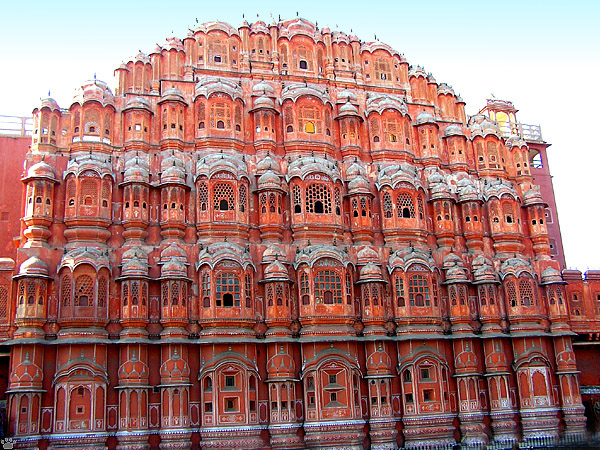
Hawa Mahal (Palace of Winds), Jaipur, Rajasthan. It was build to allow women of the royal family to view street processions without being seen.Part 6. Rajasthan: the Pink City and the White City Rajasthan is the driest state in India, and the only one with truly beautiful cities. Although immensely popular with tourists, the land is still largely unspoiled and authentic; you need to be able to draw your camera faster than a Western-movie gunfighter draws his gun when you walk these narrow streets.
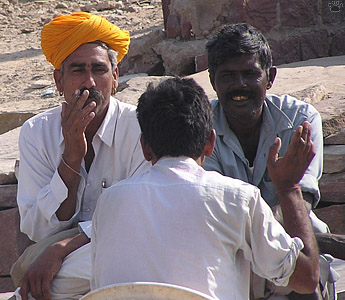
A Rajput talking with commoners, Mirvana, Rajasthan. |
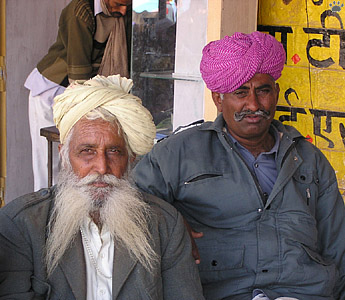
Folks in a roadside restaurant, Mirvana, Rajasthan. |
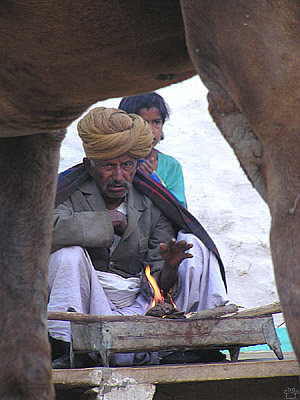
Camel driver with his daughter and his camel, Jaisalmer, Rajasthan. |
Historically known as Rajputana, "the land of kings", it has been ruled by Rajputs (a subcaste of Kshatrias), warrior clans as brave and chivalrous as the Medieval knights of Europe or the samurai of Japan. They are still highly revered by many locals. |
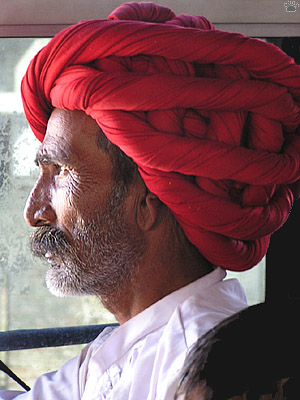
Bus driver, Rajasthan. |
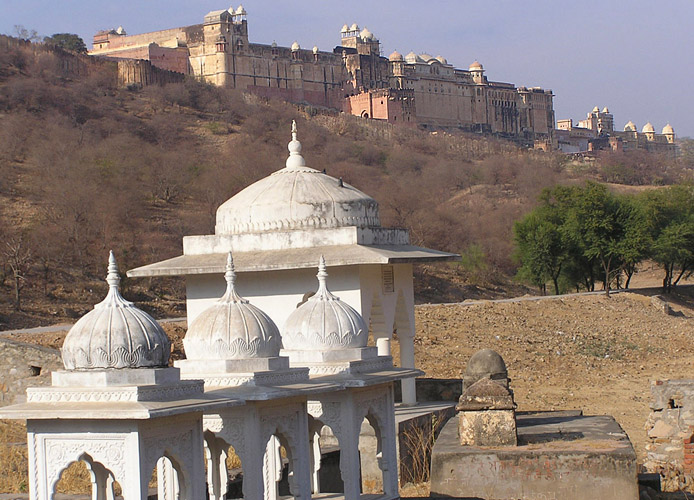
Amber Fort (c. 1592-1650), Rajasthan. |
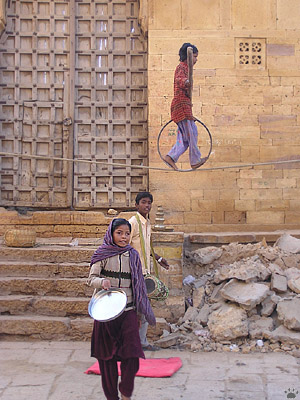
Acrobats at a bazaar, Jaisalmer. |
After centuries of feudal rule and bloody warfare, almost every city in Rajasthan has a beautiful palace and/or an impressive hilltop fort. Outside the castle walls, life ain't easy: this is a very poor, conservative state, even by Indian standards. |
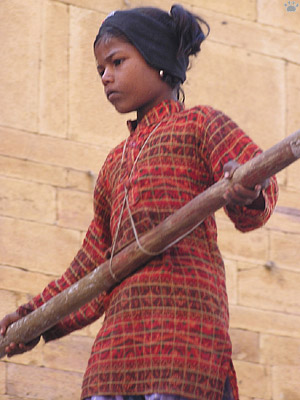
Rope walker, Jaisalmer. |
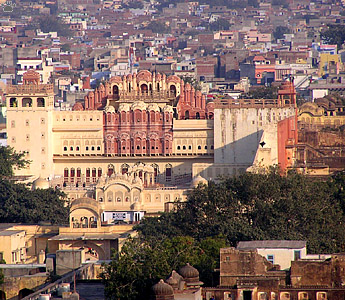
Backside view of Hawa Mahal (c. 1799), Jaipur, Rajasthan. |
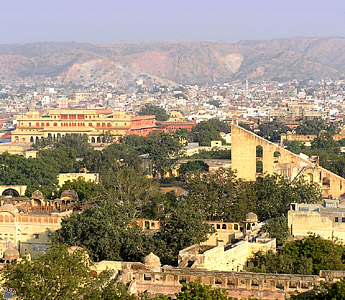
View of City Palace and Jantar Mantar Observatory (the triangular structure), Jaipur. |
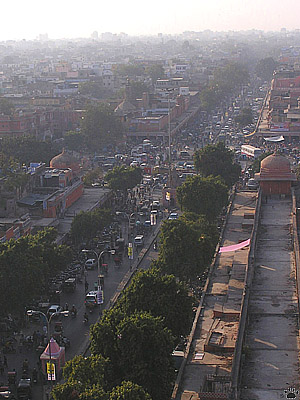
View of Jaipur from Iswari Minaret. |
The capital of Rajasthan is Jaipur, known in tourist booklets as "the Pink City". It is the most visited and the least pleasant city in the state. The only reason to stop by is the city palace, with an ancient observatory (c. 1728) and the exquisite Hawa Mahal. |
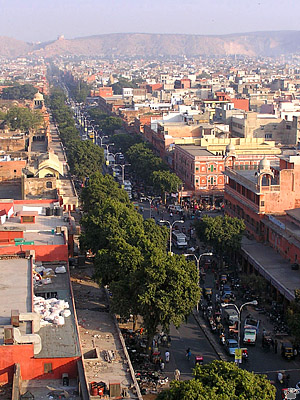
View of Jaipur from Iswari Minaret. |
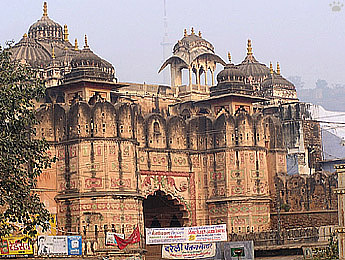 |
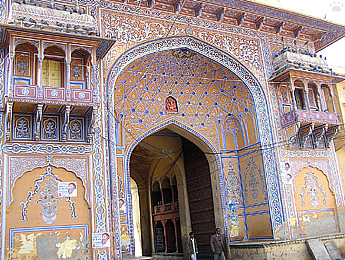 |
| City Palace (c. 1510-1905), Jaipur. |
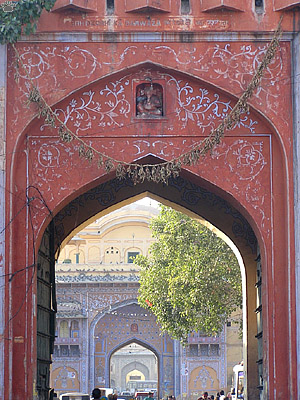
City Palace, Jaipur. |
The entire city is a bazaar, with each quarter devoted to a particular kind of commerce: some house textile, tea, or leather shops, others sell food, utensils, or car parts. The city was not originally pink - it was first painted prior to Prince Albert's visit in 1876. |

City Palace, Jaipur. |
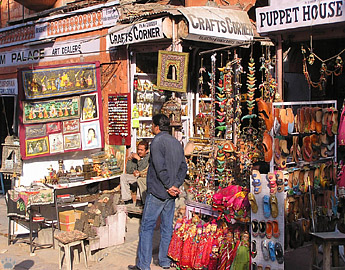 |
 |
| Street merchants, Jaipur. |
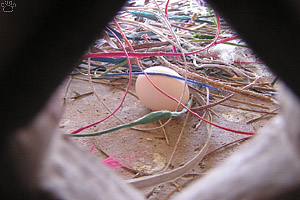
Nest of rock pigeon (Columba livia), Iswari Minaret, Jaipur. |
Udaipur, a. k. a. "the White City", in southern Rajasthan is also very touristy, but much more tranquil and beautiful. |
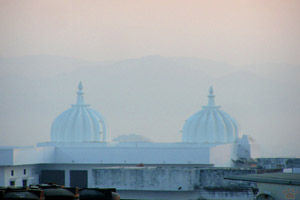
Dawn at Udaipur, Rajasthan. |
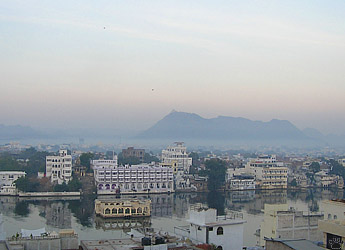 |
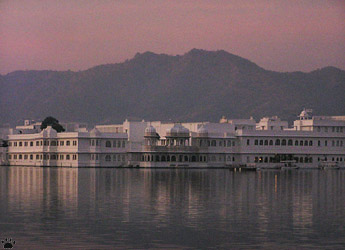 |
| Palaces of Udaipur. |
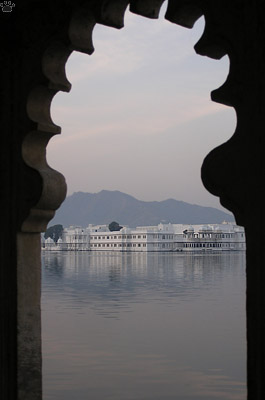
View of Lake Pichola, Udaipur. |
Udaipur is the capital of Mewar, the only Rajput kingdom never conquered by Muslims, so parts of it are well preserved. But don't expect it to look as romantic as on these photos. In recent years its lake has been mostly dry or rotten. Most of its island palaces have been converted into luxury hotels. The Old City has also been taken over by hotels and other tourism- related commerce, but you can still find a street where nobody would try to sell you anything for up to five minutes. |
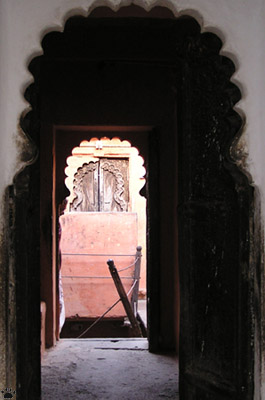
City street, Udaipur. |
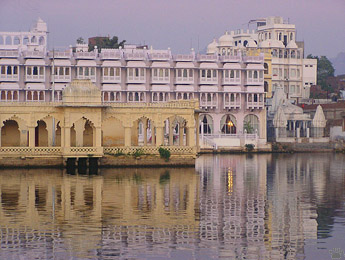
Jag Niwas Palace (c. 1754), Udaipur. |
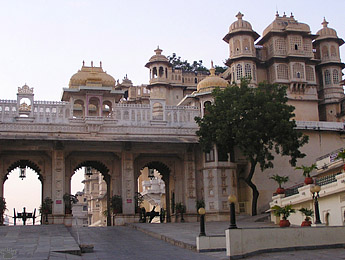
City Palace (1559-1900), Udaipur. |
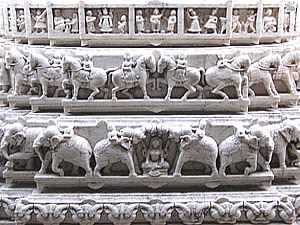
Jagdish Temple carvings, Udaipur. |
Try to get to the lake just before dawn - it's the most beautiful and quiet hour, and the only time when you can find some solitude in an Indian city. |
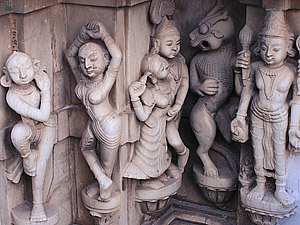
Jagdish Temple carvings, Udaipur. |
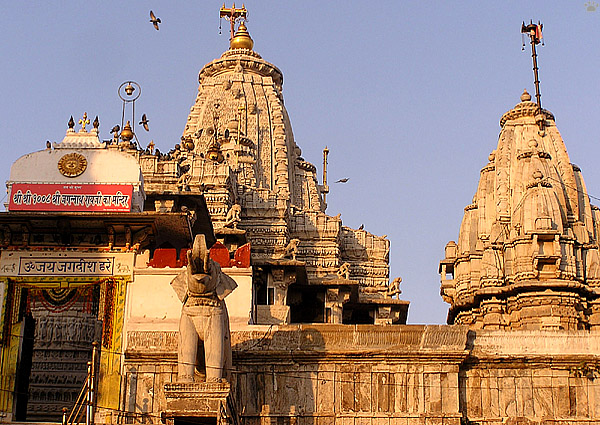
Jagdish Temple (c. 1651), Udaipur.
|
Part 7: Rajasthan (continued)
Back to Part 5
Home |